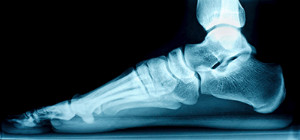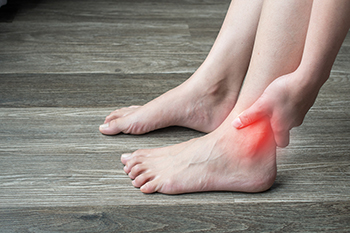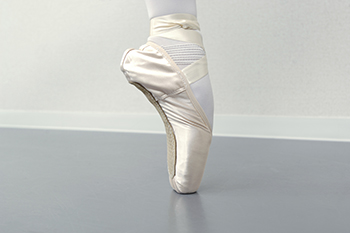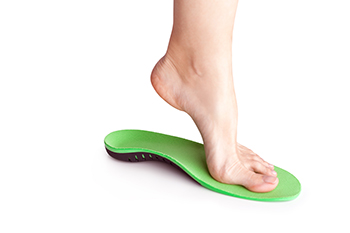
Understanding the risk factors for ankle sprains and strains is important to avoid injury. Poor athletic conditioning, characterized by a lack of regular ankle strengthening exercises, increases susceptibility to ankle sprains during strenuous activities. Muscle and ligament fatigue, especially when pushing through exhaustion towards the end of vigorous activities, further heightens the risk. Skipping warm-up sessions before physical activity leaves muscles and ligaments tight, while decreasing flexibility and increasing vulnerability to injury. Excess weight places additional stress on the joints, amplifying the likelihood of sprains during movements like walking, running, or jumping. Gender and age also play significant roles, with females over 30 and males aged 15 to 24 showing higher susceptibility to ankle sprains. Wearing high heels in uneven terrain, and wearing low-topped shoes during sports like basketball, further increases the risk of injury. Through proper conditioning, warm-up routines, weight management, and appropriate footwear selection, the risk of ankle sprains decreases. For personalized guidance and strategies for minimizing ankle sprain risk, it is suggested that you schedule an appointment with a podiatrist.
Although ankle sprains are common, they aren’t always minor injuries. If you need your ankle injury looked at, contact one of our podiatrists from Lovely Foot Associates, PC. Our doctors can provide the care you need to keep you pain-free and on your feet.
How Does an Ankle Sprain Occur?
Ankle sprains are the result of a tear in the ligaments within the ankle. These injuries may happen when you make a rapid shifting movement while your foot is planted. A less common way to sprain your ankle is when your ankle rolls inward while your foot turns outward.
What Are the Symptoms?
Preventing a Sprain
Treatment of a Sprain
In many cases, the RICE method (Rest, Ice, Compression, and Elevate) is used to treat ankle sprains. However, you should see a podiatrist to see which treatment option would work best with your injury. In severe cases, surgery may be required.
It is important to ask your doctor about rehab options after you receive treatment for your injury. Stretching, strength training, and balance exercises may help the ankle heal while also preventing further injury.
If you have any questions, please feel free to contact our office located in Johnstown, PA . We offer the newest diagnostic and treatment technologies for all your foot care needs.

Morton's neuroma is a painful condition that affects the ball of the foot, specifically the area between the third and fourth toes. This condition involves the thickening of the tissue surrounding a nerve leading to the toes, usually caused by irritation or compression. The hallmark symptom of Morton's neuroma is a sharp, burning pain or the sensation of a small, pebble-like object under the ball of the foot. As the condition progresses, individuals may experience numbness, tingling, or a feeling of swelling in the toes. The pain tends to worsen with activities like walking or wearing tight shoes, as these activities compress the affected nerve. Morton's neuroma is often more prevalent in women and individuals who frequently wear high heels or engage in activities that put repetitive pressure on the forefoot. Morton’s neuroma is treated by a podiatrist. If you are experiencing symptoms of this condition, it is suggested that you schedule an appointment with this type of doctor who can accurately diagnose and treat Morton’s neuroma.
Morton’s neuroma is a very uncomfortable condition to live with. If you think you have Morton’s neuroma, contact one of our podiatrists of Lovely Foot Associates, PC. Our doctors will attend to all of your foot care needs and answer any of your related questions.
Morton’s Neuroma
Morton's neuroma is a painful foot condition that commonly affects the areas between the second and third or third and fourth toe, although other areas of the foot are also susceptible. Morton’s neuroma is caused by an inflamed nerve in the foot that is being squeezed and aggravated by surrounding bones.
What Increases the Chances of Having Morton’s Neuroma?
Morton’s neuroma is a very treatable condition. Orthotics and shoe inserts can often be used to alleviate the pain on the forefront of the feet. In more severe cases, corticosteroids can also be prescribed. In order to figure out the best treatment for your neuroma, it’s recommended to seek the care of a podiatrist who can diagnose your condition and provide different treatment options.
If you have any questions, please feel free to contact our office located in Johnstown, PA . We offer the newest diagnostic and treatment technologies for all your foot care needs.

Bunions are bony protrusions at the base of the big toe, and manifest gradually due to a combination of genetic predisposition and external factors. Inherited structural foot issues, such as flat feet or low arches, contribute to the vulnerability of developing bunions. The gradual shifting of the metatarsophalangeal joint creates misalignment, causing the big toe to lean towards the other toes. Wearing ill-fitting footwear, particularly shoes with narrow toe boxes, exacerbates this condition by squeezing the toes together. High heels further elevate the risk, tilting the body weight forward and putting added pressure on the joint. Over time, these repeated stresses lead to the development of bony growths. Additionally, inflammatory conditions such as arthritis can accelerate bunion formation. Many bunions are unsightly and uncomfortable. If you have developed a bunion, it is suggested that you consult a podiatrist who can determine what the best treatment method is for you, which may include surgery for permanent removal.
If you are suffering from bunions, contact one of our podiatrists of Lovely Foot Associates, PC. Our doctors can provide the care you need to keep you pain-free and on your feet.
What Is a Bunion?
A bunion is formed of swollen tissue or an enlargement of boney growth, usually located at the base joint of the toe that connects to the foot. The swelling occurs due to the bones in the big toe shifting inward, which impacts the other toes of the foot. This causes the area around the base of the big toe to become inflamed and painful.
Why Do Bunions Form?
Genetics – Susceptibility to bunions are often hereditary
Stress on the feet – Poorly fitted and uncomfortable footwear that places stress on feet, such as heels, can worsen existing bunions
How Are Bunions Diagnosed?
Doctors often perform two tests – blood tests and x-rays – when trying to diagnose bunions, especially in the early stages of development. Blood tests help determine if the foot pain is being caused by something else, such as arthritis, while x-rays provide a clear picture of your bone structure to your doctor.
How Are Bunions Treated?
If you have any questions, please feel free to contact our office located in Johnstown, PA . We offer the newest diagnostic and treatment technologies for all your foot care needs.

Gout, a form of arthritis caused by the accumulation of uric acid crystals in the joints, often the big toe, requires careful attention to dietary choices to manage symptoms effectively. A key principle is moderating the intake of purine rich foods, as purines contribute to elevated uric acid levels. Reducing the consumption of organ meats, seafood, and certain legumes can help mitigate the risk of gout attacks. Adequate hydration is essential, as it supports the elimination of uric acid through urine. Incorporating low fat dairy products, which have been associated with a lower risk of gout, can be beneficial. Additionally, maintaining a healthy weight is vital, as excess weight can contribute to higher uric acid levels. Fruits, vegetables, and whole grains are encouraged, as they provide essential nutrients without significantly impacting uric acid levels. If you have developed gout, it is strongly suggested that you are under the care of a podiatrist who can effectively treat this condition, and guide you toward healthy food choices.
Gout is a painful condition that can be treated. If you are seeking treatment, contact one of our podiatrists from Lovely Foot Associates, PC. Our doctors will treat your foot and ankle needs.
What Is Gout?
Gout is a form of arthritis that is characterized by sudden, severe attacks of pain, redness, and tenderness in the joints. The condition usually affects the joint at the base of the big toe. A gout attack can occur at any random time, such as the middle of the night while you are asleep.
Symptoms
Risk Factors
Prior to visiting your podiatrist to receive treatment for gout, there are a few things you should do beforehand. If you have gout you should write down your symptoms--including when they started and how often you experience them, important medical information you may have, and any questions you may have. Writing down these three things will help your podiatrist in assessing your specific situation so that he or she may provide the best route of treatment for you.
If you have any questions, please feel free to contact our office located in Johnstown, PA . We offer the newest diagnostic and treatment technologies for all your foot care needs.

Adult-acquired flat feet, a condition marked by the gradual collapse of the arches, pose unique challenges for those affected. Unlike the common perception that flat feet only afflict children, this ailment can emerge in adulthood due to various factors. Weakening tendons, wear and tear over time, and injuries contribute to the loss of arch height, altering the foot's biomechanics. This can lead to pain, swelling, and difficulty with mobility. In some cases, underlying conditions such as arthritis exacerbate the problem. Individuals with adult-acquired flat feet may notice a progressive change in the shape of their feet and experience discomfort during prolonged standing or walking. While wearing supportive footwear and orthotics can alleviate symptoms, seeking professional guidance from a podiatrist is paramount. If you have flat feet, it is suggested that you are under the care of this type of doctor who can offer you relief techniques.
Flatfoot is a condition many people suffer from. If you have flat feet, contact one of our podiatrists from Lovely Foot Associates, PC. Our doctors will treat your foot and ankle needs.
What Are Flat Feet?
Flatfoot is a condition in which the arch of the foot is depressed and the sole of the foot is almost completely in contact with the ground. About 20-30% of the population generally has flat feet because their arches never formed during growth.
Conditions & Problems:
Having flat feet makes it difficult to run or walk because of the stress placed on the ankles.
Alignment – The general alignment of your legs can be disrupted, because the ankles move inward which can cause major discomfort.
Knees – If you have complications with your knees, flat feet can be a contributor to arthritis in that area.
Symptoms
Treatment
If you are experiencing pain and stress on the foot you may weaken the posterior tibial tendon, which runs around the inside of the ankle.
If you have any questions please feel free to contact our office located in Johnstown, PA . We offer the newest diagnostic and treatment technologies for all your foot and ankle needs.

Ankle sprains, a prevalent injury, unravel an interplay of anatomy when examined through a comprehensive lens. The anatomy of an ankle involves a complex network of ligaments, primarily the lateral ligaments on the outer side and the deltoid ligament on the inner side. Ankle sprains typically occur when these ligaments undergo excessive stretching or tearing, often as a result of sudden twists or awkward landings. The lateral ligaments, comprising the anterior talofibular, calcaneofibular, and posterior talofibular ligaments, bear the brunt of lateral movements and are commonly affected during sprains. The deltoid ligament, positioned on the inner side, stabilizes the ankle against excessive inward rolling. Ankle sprains can cause severe pain and discomfort. If you have endured this type of injury, it is suggested that you speak to a podiatrist who can offer the treatment option that is best for you.
Ankle pain can have many different causes and the pain may potentially be serious. If you have ankle pain, consult with one of our podiatrists from Lovely Foot Associates, PC. Our doctors will assess your condition and provide you with quality foot and ankle treatment.
Ankle pain is any condition that causes pain in the ankle. Due to the fact that the ankle consists of tendons, muscles, bones, and ligaments, ankle pain can come from a number of different conditions.
Causes
The most common causes of ankle pain include:
Symptoms
Symptoms of ankle injury vary based upon the condition. Pain may include general pain and discomfort, swelling, aching, redness, bruising, burning or stabbing sensations, and/or loss of sensation.
Diagnosis
Due to the wide variety of potential causes of ankle pain, podiatrists will utilize a number of different methods to properly diagnose ankle pain. This can include asking for personal and family medical histories and of any recent injuries. Further diagnosis may include sensation tests, a physical examination, and potentially x-rays or other imaging tests.
Treatment
Just as the range of causes varies widely, so do treatments. Some more common treatments are rest, ice packs, keeping pressure off the foot, orthotics and braces, medication for inflammation and pain, and surgery.
If you have any questions, please feel free to contact our office located in Johnstown, PA . We offer the newest diagnostic and treatment technologies for all your foot care needs.

Achieving a beautifully pointed toe is a hallmark of grace in ballet, and dedicated foot stretches can significantly contribute to this desired aesthetic. Begin by sitting with your legs extended and gently flex and point your toes, emphasizing the extension of each digit. A towel stretch proves effective, which is done by looping a towel around the ball of your foot and gently pulling it towards you, feeling the stretch along the arch and toes. Rolling a tennis ball beneath the arches and toes massages and improves flexibility. Additionally, the seated toe stretch involves sitting back on your heels, elongating the toes, and fostering a deep stretch. Practicing these stretches regularly enhances the flexibility and strength of the foot's intrinsic muscles, contributing to a more refined toe point. Incorporating these targeted stretches into your ballet warm-up or cool-down routine can cultivate the suppleness necessary for achieving that coveted, elegant toe point on stage. If you would like additional information about effective foot and toe stretches, it is suggested that you confer with a podiatrist.
Why Stretching Is Important for Your Feet
Stretching the feet is a great way to prevent injuries. If you have any concerns with your feet consult with one of our podiatrists from Lovely Foot Associates, PC. Our doctors will assess your condition and provide you with quality foot and ankle treatment.
Stretching the Feet
Stretching the muscles in the foot is an important part in any physical activity. Feet that are tight can lead to less flexibility and make you more prone to injury. One of the most common forms of foot pain, plantar fasciitis, can be stretched out to help ease the pain. Stretching can not only ease pain from plantar fasciitis but also prevent it as well. However, it is important to see a podiatrist first to determine if stretching is right for you. Podiatrists can also recommend other ways to stretch your feet. Once you know whether stretching is right for you, here are some excellent stretches you can do.
It is best to go easy when first stretching your foot and work your way up. If your foot starts hurting, stop exercising to ice and rest the foot. It is advised that you then see a podiatrist for help.
If you have any questions, please feel free to contact our office located in Johnstown, PA . We offer the newest diagnostic and treatment technologies for all your foot care needs.

Managing plantar fasciitis can make mornings difficult, as stepping out of bed often brings heel pain. This common condition causes discomfort in the heel or foot arch, hindering activities such as exercising and walking. Plantar fasciitis stems from various causes, including excessive exercise, repetitive motion, or from wearing ill-fitting footwear Additionally, conditions that can include high arches, flat feet, weight gain, diabetes, and arthritis may also lead to developing this condition. These factors can lead to inflammation in the plantar fascia. Custom-made orthotics, tailored to your foot's biomechanics and gait, can be an effective treatment. These devices, fitted in your shoes, can aid in recovery from stress or tears and mitigate movements causing inflammation. If you suffer from persistent plantar fasciitis pain, it is suggested that you make an appointment with a podiatrist who can design orthotics for you to help manage your heel pain.
If you are having discomfort in your feet and would like to try orthotics, contact one of our podiatrists from Lovely Foot Associates, PC. Our doctors can provide the care you need to keep you pain-free and on your feet.
What Are Orthotics?
Orthotics are inserts you can place into your shoes to help with a variety of foot problems such as flat feet or foot pain. Orthotics provide relief and comfort for minor foot and heel pain but can’t correct serious biomechanical problems in your feet.
Over-the-Counter Inserts
Orthotics come in a wide variety of over-the-counter inserts that are used to treat foot pain, heel pain, and minor problems. For example, arch supports can be inserted into your shoes to help correct overarched or flat feet, while gel insoles are often used because they provide comfort and relief from foot and heel pain by alleviating pressure.
Prescription Orthotics
If over-the-counter inserts don’t work for you or if you have a more severe foot concern, it is possible to have your podiatrist prescribe custom orthotics. These high-quality inserts are designed to treat problems such as abnormal motion, plantar fasciitis, and severe forms of heel pain. They can even be used to help patients suffering from diabetes by treating foot ulcers and painful calluses and are usually molded to your feet individually, which allows them to provide full support and comfort.
If you are experiencing minor to severe foot or heel pain, it’s recommended to speak with your podiatrist about the possibilities of using orthotics. A podiatrist can determine which type of orthotic is right for you and allow you to take the first steps towards being pain-free.
If you have any questions please contact our office located in Johnstown, PA . We offer the newest diagnostic and treatment technologies for all your foot and ankle needs.